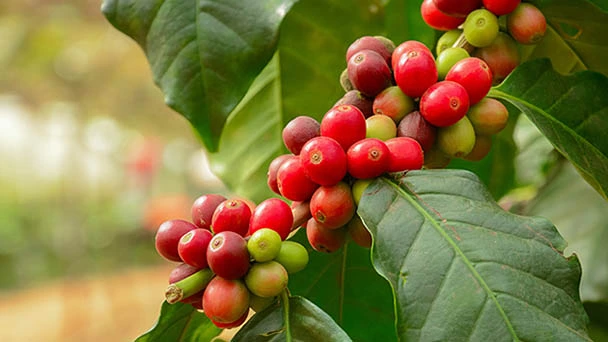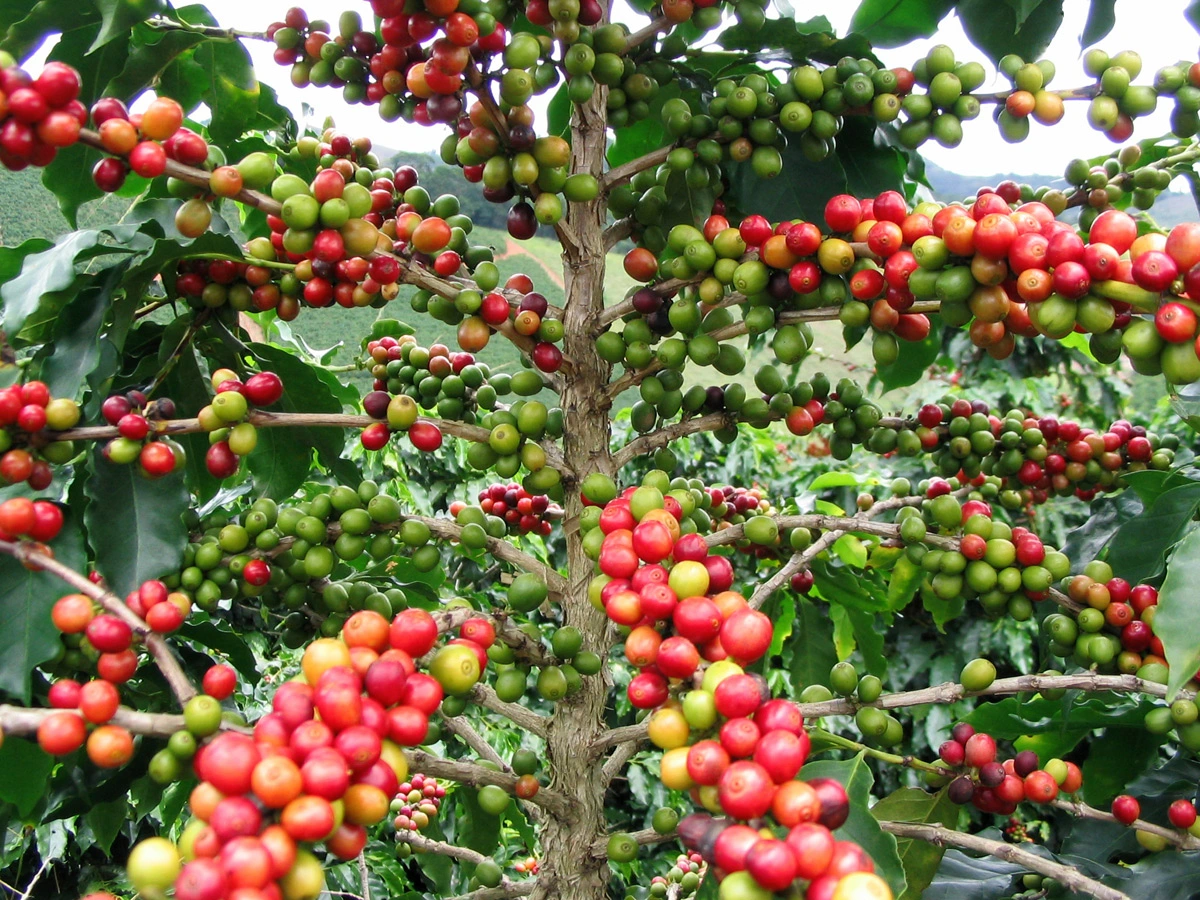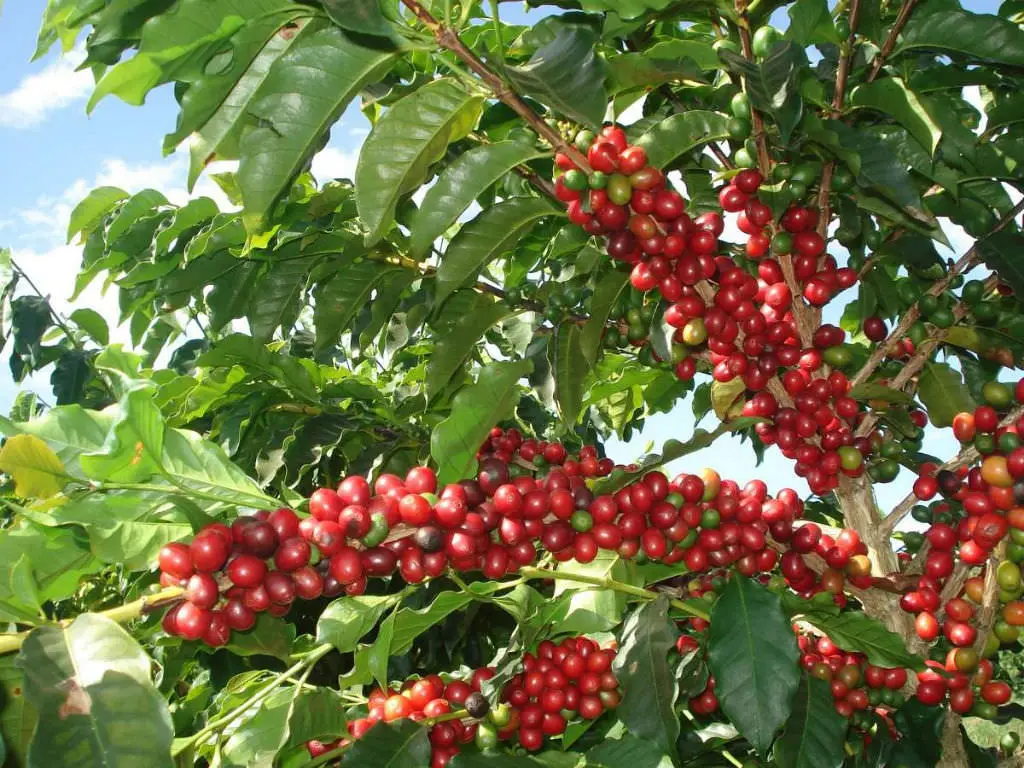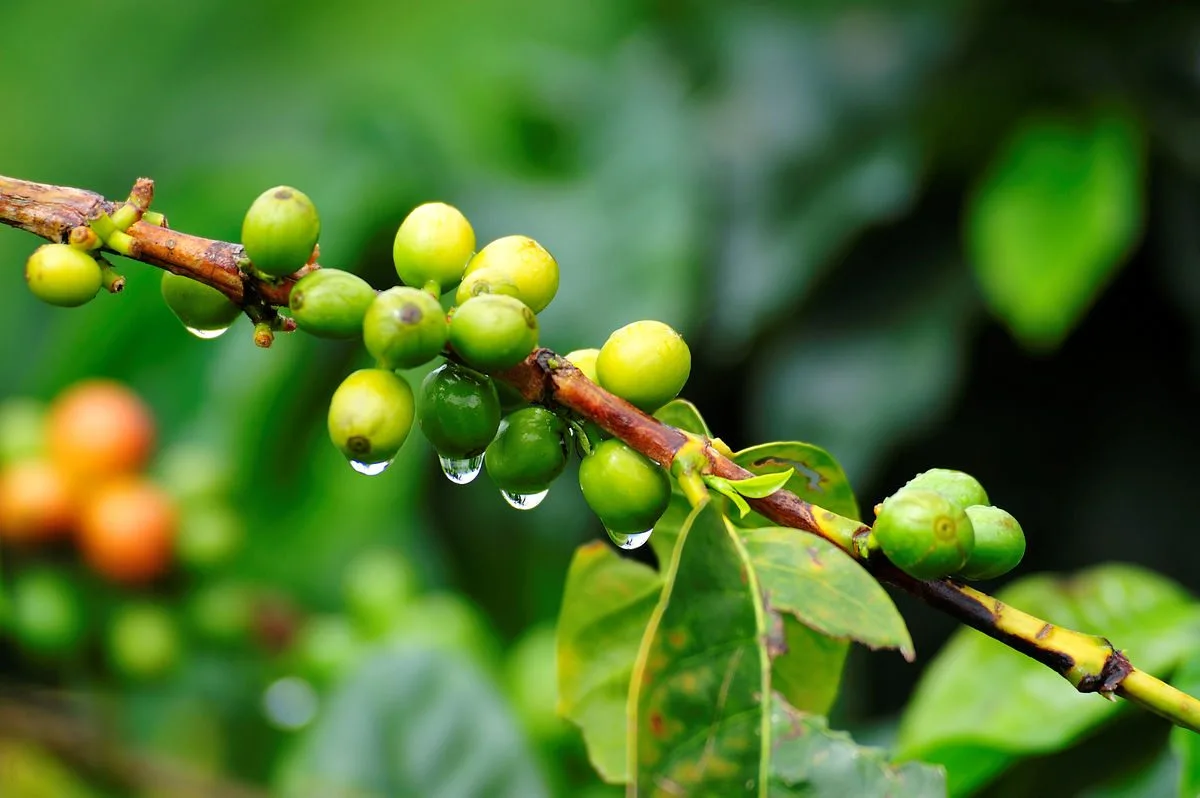Growing Coffee Plant: How to Care for Coffea Arabica
Written by Ivy
Nov 16 2021

Coffee plant, also known as Coffee Arabica, is the most traditional Arabian coffee variety. Before the 15th century, coffee was monopolized by the Arab world for a long time, so it was called coffee Arabica by Europe.
Plant coffee is suitable for growth in mineral rich volcanic geological soil with a growth temperature of about 20 ℃ and an altitude of 600m. Plant coffee is native to the hot spots in northern and Central Africa. It is mainly planted in the tropics of Latin America, Africa and Asia.

Coffee Plant Care in Detail
Coffee trees need a lot of fertilizer, so a layer of base fertilizer should be laid in the soil when planting. We can add cake, fertilizer and water or plant general fertilizer once a month behind the coffee tree.

We can take cuttings from the plants truncated 0-45cm above the ground, which have good rooting and good root system. Cut off the top in the first half of the year and carry out coffee plant propagation from cutting 2-3 months later. These cuttings have good root system and good basal axis system development, and the plant mortality is very small after planting.
Plant coffee is suitable for growth in mineral rich volcanic geological soil with a growth temperature of about 20 ℃ and an altitude of 600m. Plant coffee is native to the hot spots in northern and Central Africa. It is mainly planted in the tropics of Latin America, Africa and Asia.
Coffee Plant Quick InfoWhen to Plant Coffee PlantWhen does Coffee Plant Bloom & HarvestCoffee Plant WateringCoffee Plant SoilCoffee Plant LightCoffee Plant TemperatureCoffee Plant HumidityCoffee Plant FertilizerCoffee Plant PruningCoffee Plant RepottingCoffee Plant Pest & Disease ControlCoffee Leaf RustWilt DiseasePink DiseaseCoffee Plant PropagationCoffee Plant Propagation from CuttingCoffee Plant Propagation from SeedCoffee Plant Benefits
Coffee Plant Quick Info
| Botanical/Scientific Name | Coffea Arabica |
| Common Name | Coffee Plant |
| When to Grow/Bloom/Harvest | Plant in the late spring/Bloom from February until May/Harvest from September to March |
| Uses | Flavouring in ice cream, pastries, candies, and liqueurs |
| Origin | Ethiopian plateau |
| Light Care | Bright, but indirect, light |
| Soil Care | Moist |
| Temperature Care | Between 53 F-80 F (12 C-25 C) |
| Humidity Care | Humidity level of 50 percent or higher |
| Watering | Need watered regularly |
| Pruning Care | Be pruned back during the spring months |
| Fertilizer Care | A balanced houseplant fertilizer diluted to half strength |
| Propagation | Cuttings |
| Toxic | Poisonous to dogs and other pets |
| Flower Color | White |

When to Plant Coffee Plant
If you want to plant coffee trees, you should choose the time first. Usually, April is more suitable every year. The climate at this time is more conducive to seed germination. Generally, it can be planted as long as the temperature is about 15-20 ℃. At the beginning of planting, you can choose a relatively small flowerpot, and there is no need to use too large flowerpots. Coffee trees do not have too high requirements for soil, and the garden soil we often see can be used.When does Coffee Plant Bloom & Harvest
Coffee plant takes about 3 years to grow fruit. The first flowering period of coffee tree is about 3 years old. The white flowers are five petaled tubular flowers, with a faint fragrance of jasmine, and the inflorescences are dense and arranged in clusters. Coffee plant will wither after two or three days of flowering and begin to bear fruit a few months later. Coffee plant fruit is a drupe with a diameter of about 1.5 cm. It is initially green, then gradually turns yellow, and turns red after maturity.Coffee Plant Care in Detail
Coffee Plant Watering
As a potted ornamental, coffee plant should keep the basin soil moist during the growth period. The principle of dry and wet should be mastered in watering, that is, watering should be carried out after the whole basin soil is almost dry, and it should be poured thoroughly to ensure the alternation of dry and wet. Do not let the basin soil be too dry or too wet. When watering, see dry and see wet. Coffee plant needs a lot of water during the seedling stage. If it is careless, it will cause the seedling to dry slightly. Be very careful and don't over dry the basin soil. One year later, coffee plant seedlings are more drought resistant. Even if the water is slightly insufficient, it will not affect their growth.Coffee Plant Soil
Healthy coffee trees need soil with the right acidity. The acidity of coffee plant soil also needs to be at an optimal pH level, that is, the pH value is between 4.9-5.6. Between these levels, plants can better absorb nutrients, thus producing more coffee fruits and reducing pest and disease-related problems. If your soil is too acidic, you can neutralize it by adding lime, or if it also lacks magnesium, you can neutralize coffee plant soil by adding lime. Low acidity is also a problem, usually balanced by frequent fertilization.Coffee Plant Light
Coffee plant likes light. If there is no sunlight, it will grow poorly. But don't expose yourself to the sun in summer. The sun will damage the leaves. We'd better put the coffee plant in a place with scattered light for summer.Coffee Plant Temperature
15-24 ℃ is the ideal temperature for coffee plant growth. Coffee trees like mild but not very hot temperatures during the day and less than two hours of direct sunlight. At night, coffee plant hopes to have an environment of about 15 degrees Celsius, but the temperature can't be too low, because too warm will make coffee plant berries develop too fast and can't produce small, strong, hard and high-quality coffee beans; In case of frost, the coffee tree will freeze to death again.Coffee Plant Humidity
The humidity of coffee plant requires that the annual rainfall must reach 1500-2000 mm, and the rainfall time should match the flowering cycle of coffee trees. Of course, in addition to seasonal rainfall, there should also be fertile soil and good drainage. Fertile soil containing volcanic ash. In addition, too strong sunlight will inhibit the growth of coffee trees. Therefore, some shade trees are usually planted in various producing areas.Coffee Plant Fertilizer
For potted coffee trees, we should pay attention to keeping the soil moist and follow the principle of "see dry and see wet". Generally, water shall be poured once every 3 days. The specific amount and frequency shall be determined according to the dry and wet degree of basin soil and the state of plants.Coffee trees need a lot of fertilizer, so a layer of base fertilizer should be laid in the soil when planting. We can add cake, fertilizer and water or plant general fertilizer once a month behind the coffee tree.

Coffee Plant Pruning
Usually, the first coffee plant pruning every year will be from the end of December to march of the next year, because it is easier to carry out coffee plant pruning in the coffee garden with coffee harvesting and just weeding, and with fertilization to supplement the vitality of the coffee tree. The second pruning of branches and leaves will be from May to July because coffee plant pruning is easier to be carried out in the coffee garden with the second weeding and topdressing. The first pruning is very different from the second pruning. The first pruning is to thoroughly sort out the coffee tree. The branches and leaves below 30 cm above the ground and more than 2 m above the ground must be completely cut off, and the branches and leaves of the coffee tree shall be sorted according to the branch size of the weight that the coffee tree can carry. In the second pruning, only the branches and leaves less than 30 cm above the ground and more than 2 meters above the ground are completely cut off, so that the coffee tree can concentrate its nutrients on the fruit growth.Coffee Plant Repotting
Coffee plant grows rapidly, so it basically needs to change the basin once a year. We can cut off the old roots when there are many root tangles. When coffee plant changes pots, we must take the original soil with us to ensure that it can adapt to the growth environment.Coffee Plant Pest & Disease Control
Coffee Leaf Rust
This coffee plant disease will cause orange rust like spots on the back of coffee leaves. This coffee plant disease will cause leaves to fall, just like the impact of coffee leaf miner. Wind and rain will spread fungal spores of leaf rust, and this fungus will grow in large numbers at about 21 ° C. Therefore, this disease most often occurs in Arabica trees planted at low altitude, warm, humid and other climatic conditions. Because the disease limits the growth of new stems, it will not only affect the yield of the current year, but also have a significant impact on the coffee harvest of the next year. Coffee trees infected by leaf rust can not produce fully mature fruits. Even if they grow fruits successfully, they will produce defective beans with light weight and astringent taste.Wilt Disease
Withering disease is a vascular disease of coffee trunk infected by fungi. It will block the circulation of water and sap, resulting in fallen leaves, branch necrosis and premature fruit ripening. If we use these red but immature fruits, the coffee may lose acid, increase bitterness, and even appear the green taste of immature fruits.Pink Disease
Pink disease is another plant disease infected by fungi, which will make branches appear pink reticulation, and the infected branches will lose leaves and die. The coffee plant disease mainly occurs in coffee producing areas in Brazil.
Coffee Plant Propagation
Coffee Plant Propagation from Cutting
There are upper and lower buds in the main leaf axils of coffee plant. The horizontal branches are drawn from the upper buds to form fruit branches, and the vertical branches are drawn from the lower buds. The growth habit of the straight branch is similar to that of the trunk. It can be used to cultivate new stems. Only the straight branch cutting can cultivate normal plants, because the horizontal branch cutting or scion only grows laterally. The rooting ability of the straight branch is mainly due to the high content of sugar, growth hormone and rooting auxiliary factors.We can take cuttings from the plants truncated 0-45cm above the ground, which have good rooting and good root system. Cut off the top in the first half of the year and carry out coffee plant propagation from cutting 2-3 months later. These cuttings have good root system and good basal axis system development, and the plant mortality is very small after planting.
Coffee Plant Propagation from Seed
For coffee plant propagation from seed, we can choose seeds with full and healthy particles. Coffee tree seeds can be sown directly without soaking, but they emerge faster after soaking. They can be taken out after soaking in clean water for 10 minutes, and then sown. The bottom of the basin can be covered with vermiculite, sown the seeds, and then covered with peat soil. When coffee plant comes out and grows leaves, we can transplant. Select a pot with good air permeability, and its capacity should ensure that the plant has enough growth space.Coffee Plant Benefits
Proper drinking coffee can burn body fat, promote fat decomposition and reduce weight. Coffee contains magnesium and potassium, which can regulate blood sugar, reduce the incidence of type two diabetes, and reduce the incidence of stroke. Moreover, coffee also contains antioxidants, which can remove free radicals, protect the body and reduce cancer. At the same time, coffee can stimulate the central nervous system, resist depression, increase happiness, focus attention, enhance memory and reduce the incidence of Alzheimer's disease.Latest Updated
- Benefits of Bugleweed - 7 Science-backed Health Benefits
- Bugleweed Dangers & Side Effects - Is It Poisonous?
- How to Plant Evergreen Trees - What You Should Know
- When to Plant Evergreens - Grow Guide for Evergreen Trees
- 12 Wonderful Evergreen Shrubs for Your Garden
- 12 Popular Evergreen Plants with Pictures for Beginners
- When And How To Prune A Lilac Bush Like a Pro
- How to Grow & Care for Lilac Vine (Hardenbergia Violacea)
- Japanese Lilac Tree (Syringa Reticulata) Care & Propagation Guide
- Shumard Oak Pros and Cons - What to Know
Popular Articles
- Winter maintenance of Antirrhinum Majus
- How to Grow Terminalia Mantaly Tree
- How to Grow and Care for Crossostephium Chinense
- How to grow Antirrhinum Majus in spring
- Peristeria Elata (Dove Orchid) Profile: Info & Care Guide
- Underwatered Snake Plant (Sansevieria Trifasciata) - Signs And How To Fix
- How to Care for Brazilian Jasmine Plant (Mandevilla Sanderi)
- How to Grow & Care for Graptopetalum Purple Delight in Summer
- Rosa Chinensis (China Rose): Plant Growing & Care Tips
- How to Care for Baby Sun Rose (Aptenia Cordifolia)